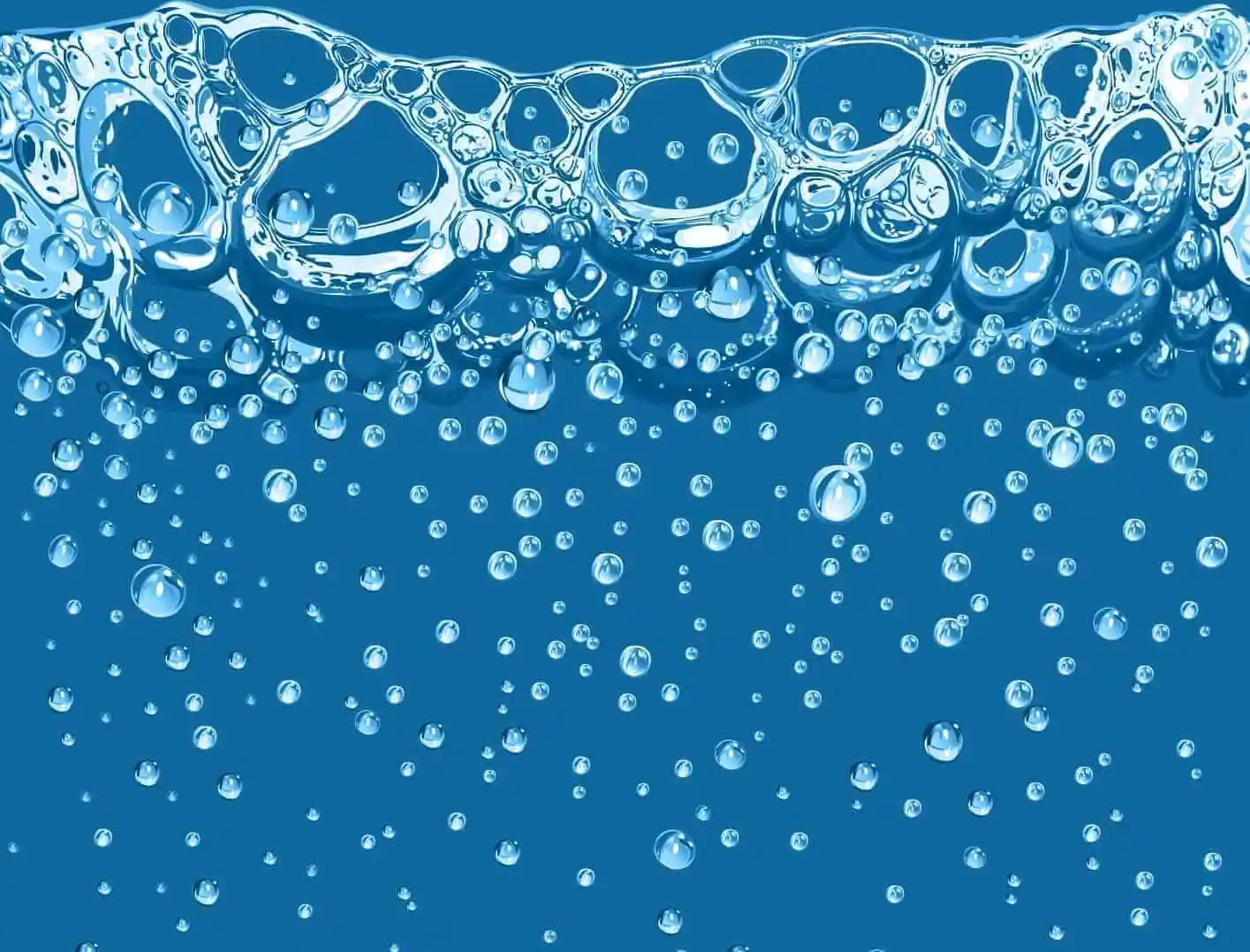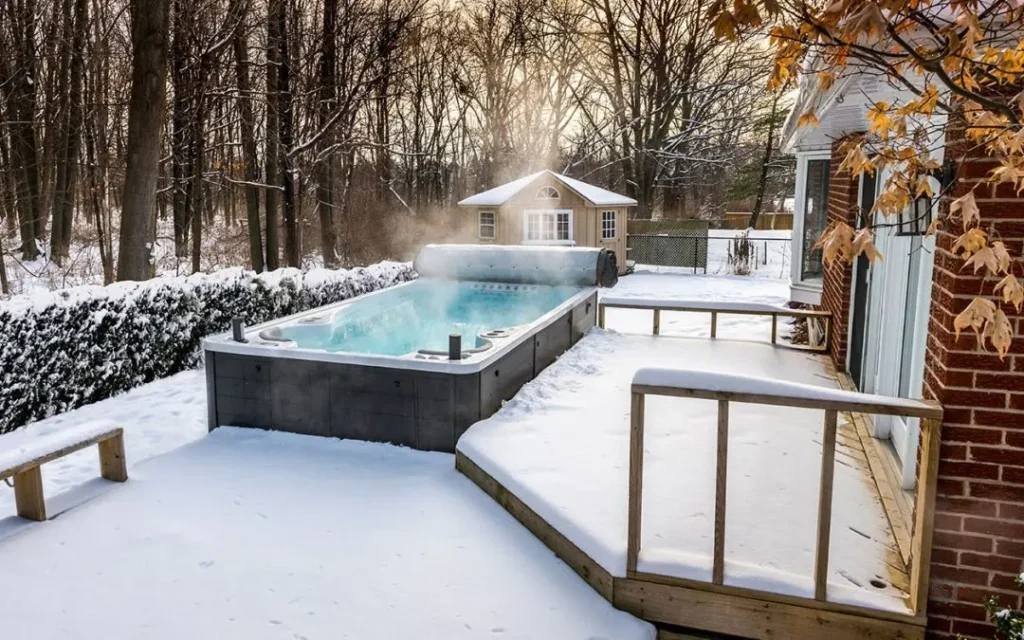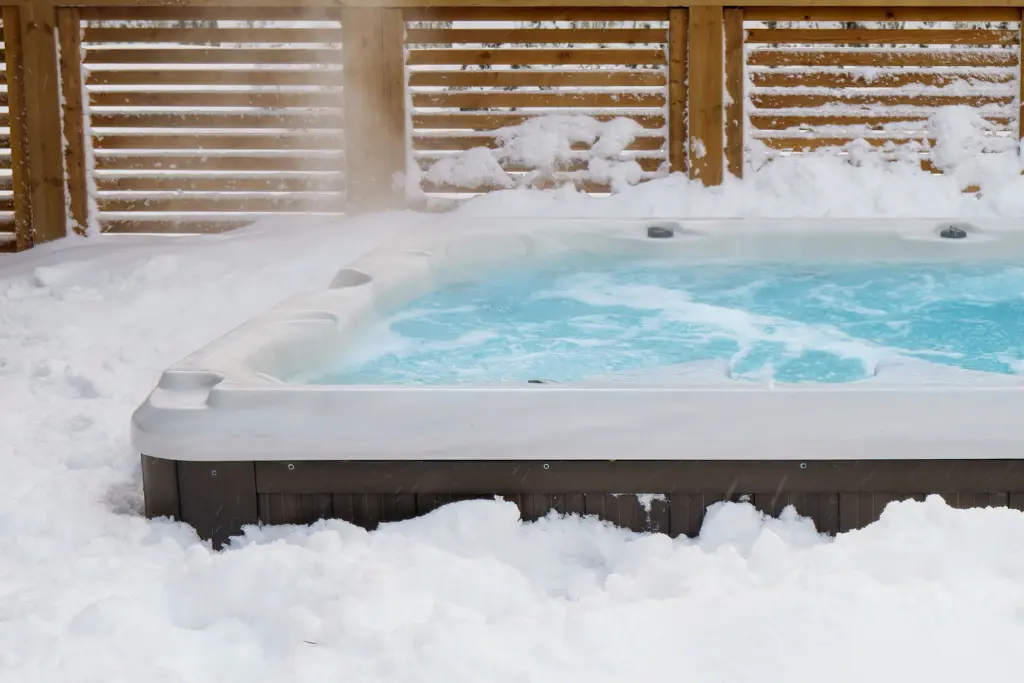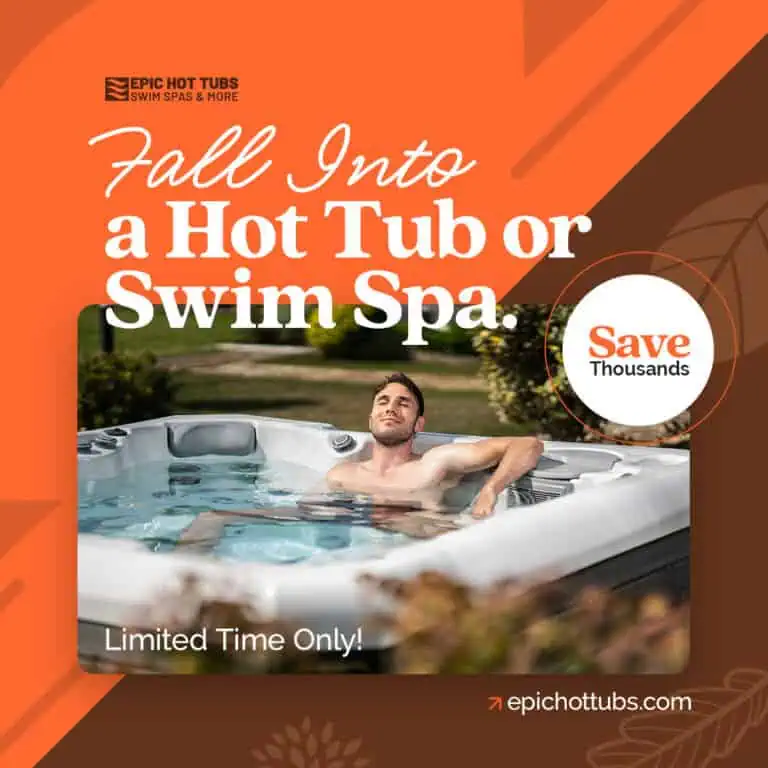We're sharing the things to keep in mind when building a deck around your swim…

Can You Use a Swim Spa in the Winter? Discover Tips for a Cozy, Energy-Efficient Experience!
Learn how to transform your swim spa into a cozy, energy-efficient winter retreat with practical tips for maintenance, heating, and hydrotherapy benefits.
AWinter’s freezing temperatures and shorter days are reason enough to use this season for much-needed rest and rejuvenation—but what if you could take that to the next level with the warm, massaging waters of a swim spa?
Just because you’re hibernating doesn’t mean your swim spa has to. In fact, modern swim spas are meant to be a year-round sanctuary; a place to stay active even when you’re stuck at home, and to find comfort when a winter chill sets in. With the right setup and a bit of know-how, your spa can be a warm retreat in even the frostiest weather.

Embracing the Chill: The Unexpected Joys of a Winter Swim Spa
There’s something magical about immersing yourself in warm water while the world outside is iced over. A winter swim spa isn’t just about defying the cold; it’s about embracing a season of wellness and relaxation. With modern features like advanced temperature control, your spa can keep its water invitingly warm even when the mercury drops. No need to miss out on those low-impact workouts or the pleasure of a heated soak.
Winter Warmth & Wellness: How It All Works
Modern swim spas come equipped with built-in systems to maintain a consistent water temperature all year long. Here’s how these features come together to create your very own winter retreat:
- Built-In Temperature Control: These smart systems continuously monitor and adjust the water temperature to keep it warm—even the weather outside is bone-chilling.
- Efficient Heaters: Whether you’re using a high-quality gas heater or a quieter electric alternative, your spa’s heater works hard to counteract heat loss and maintain that perfect warmth.
- Core Temperature Benefits: The consistent warmth not only relaxes your muscles but also helps maintain your body’s core temperature, making your spa a safe spot for both exercise and relaxation during extreme weather.
North Carolina’s winters sometimes bring temperatures as low as 28°F, but even then, a swim spa stands ready to deliver a steady, comforting 100-104°F—perfect for both hydrotherapy and a rejuvenating workout.F
Cover Up: How a Quality Thermal Cover Makes All the Difference
A well-fitted thermal cover isn’t just a protective accessory—it’s essential for energy efficiency and heat retention during the winter months.
A quality cover offers several benefits:
- Heat Retention: It acts as a barrier, trapping the warmth inside and reducing the workload on your heater.
- Energy Savings: By minimizing heat loss, you lower your overall energy consumption, which means fewer surprises on your monthly bill.
- Safety and Maintenance: Good covers come with secure locks to fend off snow and debris, ensuring your spa’s components—like filters and water jets—stay in optimal condition.
Heater Know-How: Keeping Your Spa Toasty
Your swim spa’s heater is the unsung hero of each winter. Modern systems, including models like the Hayward H-Series, are designed to heat water quickly and efficiently. Whether it’s a natural gas or an electric heater, these devices are optimized for minimal energy consumption even in extreme cold. By ensuring your heater is well-maintained and paired with effective insulation, you’ll enjoy warm water all season long without worrying about skyrocketing energy costs.
Maintenance Matters: Keeping Your Swim Spa in Prime Condition
Winter brings unique challenges to your swim spa, and a bit of extra maintenance can go a long way. The cold can affect everything from your spa’s filters to its chemical balance, so regular care is key.
Consider these tips:
- Frequent Inspections: Check your water’s pH levels and chemical concentrations more often during the winter months.
- Snow and Debris Management: Snow accumulation around the spa can clog critical components. A quick clean-up routine done every week or so helps prevent issues like blocked pool skimmers or closed pool pipes.
- Heater and Cover Checks: Regularly inspect your heater for signs of wear, and ensure your cover remains in top condition. These simple steps can prolong the lifespan of your equipment and keep it operating as intended.
A little extra diligence now means fewer headaches later, and a cozier winter.
Hydrotherapy & Health: More Than Just a Warm Dip
Beyond providing a break from the cold, a winter swim spa is a powerful tool for your overall health and wellness. The warm water is the perfect environment for hydrotherapy—great for those with chronic pain or muscle stiffness.
Hydrotherapy for Pain Relief and Muscle Recovery
The warm water in a swim spa provides a gentle, buoyant environment that reduces the pressure on your joints, making it easier to move. The heat also soothes aching muscles and joints, promoting blood circulation and reducing stiffness.
Low-Impact Exercise Options
For those who may struggle with high-impact exercises during winter due to joint pain or mobility issues, a swim spa offers a solution. The buoyancy of water reduces the impact on joints, making it easier to do cardiovascular and strength-training exercises without straining your body. Activities like water aerobics, swimming, and resistance training can be performed with minimal risk of injury.
Mental Health and Stress Relief
The cold, gray days of winter can sometimes lead to feelings of sadness or depression, often referred to as “seasonal affective disorder” (SAD). The warm water of a swim spa can help counteract these feelings by boosting serotonin levels, the neurotransmitters that regulate mood.
Balancing Energy Costs and Comfort
You might be wondering: Is it really energy efficient to run a swim spa in winter? The answer? Yes—with a little help from modern design.
Smart insulation paired with efficient heating systems means that even in the harshest winter weather, your spa is engineered to maintain a consistent water temperature with minimal energy consumption. Innovations in heater technology and the strategic use of a quality thermal cover can also help reduce heat loss, which keeps your energy bills in check.
Many modern swim spas even come with built-in energy monitoring systems, so you can track energy usage and make tweaks to optimize performance.
Practical Tips for a Cozy Winter Experience

Ready to make the most of your swim spa this winter? Here are a few straightforward tips to ensure your spa stays cozy throughout the cold months:
- Invest in a Quality Cover: A robust, secure cover is your first line of defense against the cold and snow.
- Schedule Regular Maintenance: Keep an eye on your spa’s filters and chemical levels to prevent imbalances.
- Monitor Your Heater: Regularly inspect your heater to ensure it’s operating efficiently.
- Embrace a Routine: Regular use of your spa helps keep its systems primed, so incorporate it into your daily or weekly schedule.
- Set the Ambiance: Soft lighting and background music can elevate your spa experience, transforming a simple soak into a soothing retreat.
These practical steps not only enhance your spa’s performance but also create an inviting atmosphere that makes every winter dip a delight.
Making Winter Work for Your Swim Spa
Your swim spa becomes more than just a luxury for summer days; it turns into a reliable winter retreat where low-impact workouts, hydrotherapy sessions, and family bonding can thrive even in the coldest months. When you step into that warm water, you’re not just fighting off the chill—you’re embracing a lifestyle of comfort, energy efficiency, and holistic well-being.
Wrap Up
Winter is not the enemy, it’s an invitation—a chance to rethink how you use your swim spa. With smart technology, thoughtful maintenance, and a few practical tips, you can enjoy all the benefits of a warm, inviting spa even when the snow is falling. So next time the first frost appears, embrace the chill, harness the heat, and let your swim spa be the cozy retreat that transforms your winter into something truly special.
Frequently Asked Questions (FAQs)
How do I winterize my swim spa?
To winterize your swim spa, start by thoroughly cleaning it, then balance the water chemistry. Drain the spa to an appropriate level, remove any water from the plumbing lines and equipment, and ensure all surfaces are dry. When all that’s done, cover it securely with a high-quality cover to protect it from winter elements.
What is the lowest temperature for a swim spa?
The lowest safe temperature for a swim spa is typically around 50°F (10°C). However, for comfort and optimal usage, it’s best to keep the water temperature between 80°F to 104°F (27°C to 40°C).
How can I keep the water temperature stable during winter months?
The easiest way to keep your water temperature stable in the cold is through built-in temperature control systems that automatically adjust the heater’s output.
Will my swim spa’s heater work effectively in extreme cold?
Yes, as long as it is well-maintained and properly insulated. High-quality heaters, whether gas or electric, are engineered to operate even in low temperatures. Pairing your heater with a durable cover can help reduce heat loss as well, so investing in a quality one is always a good idea when the temperatures start to drop.
Does using a swim spa in winter increase maintenance requirements?
Yes, winter conditions usually mean a bit more maintenance for swim spa owners. It’s best to check your spa more frequently for issues like snow accumulation or chemical imbalances.
Routine inspections of filters, the heater, and the cover will help maintain peak performance throughout the colder months.

Richard Horvath
Richard has been in the hot tub & spa industry for years. As a long hot tub & swim spa owner himself, Richard has a passion for helping homeowners create their dream backyard.



